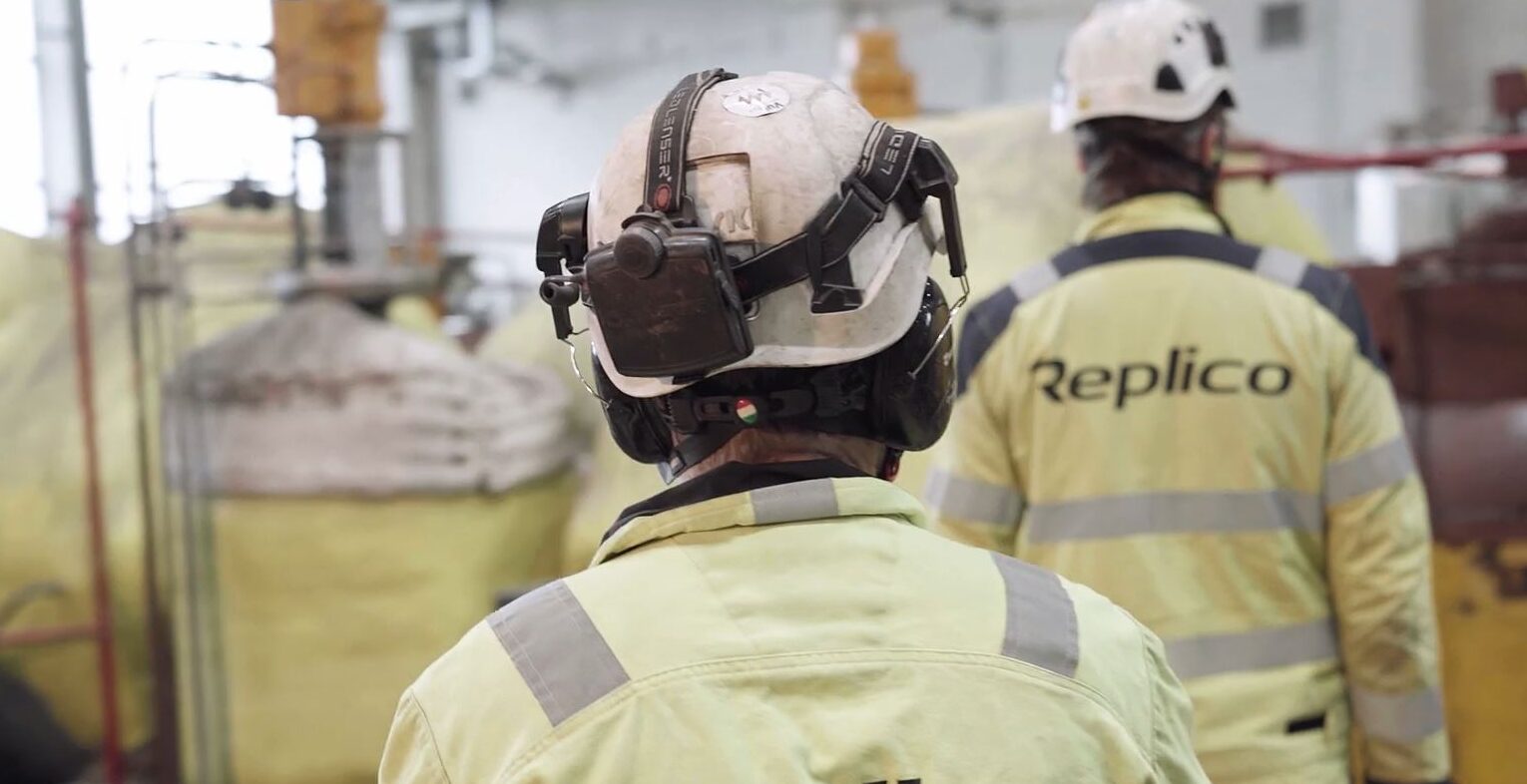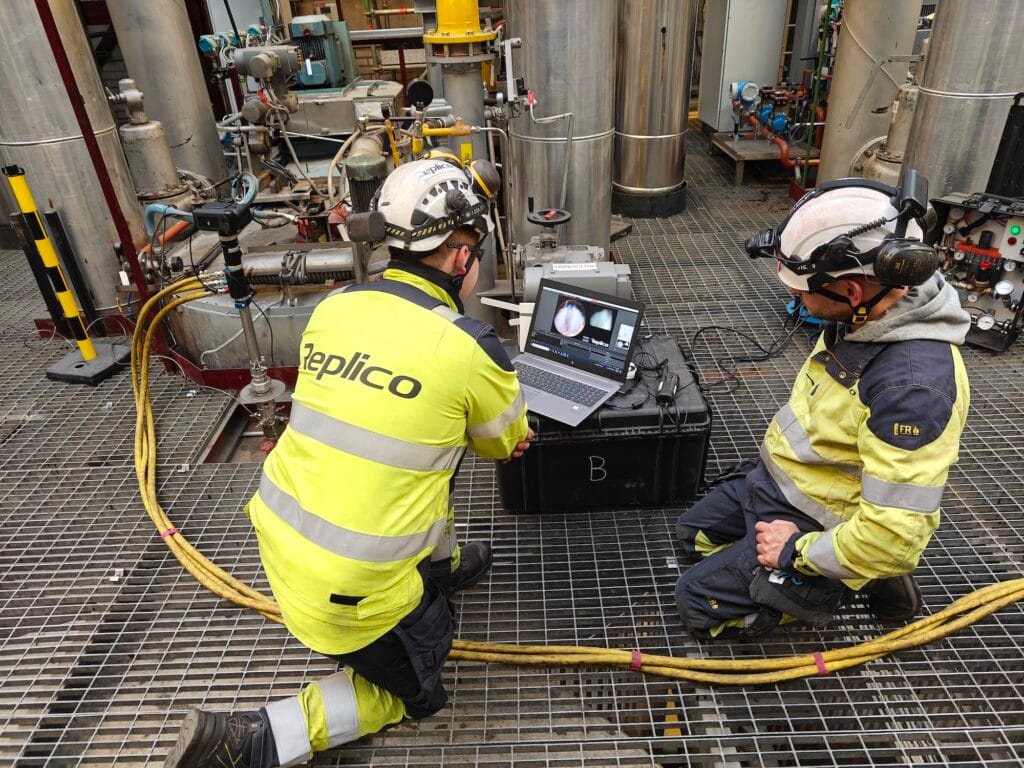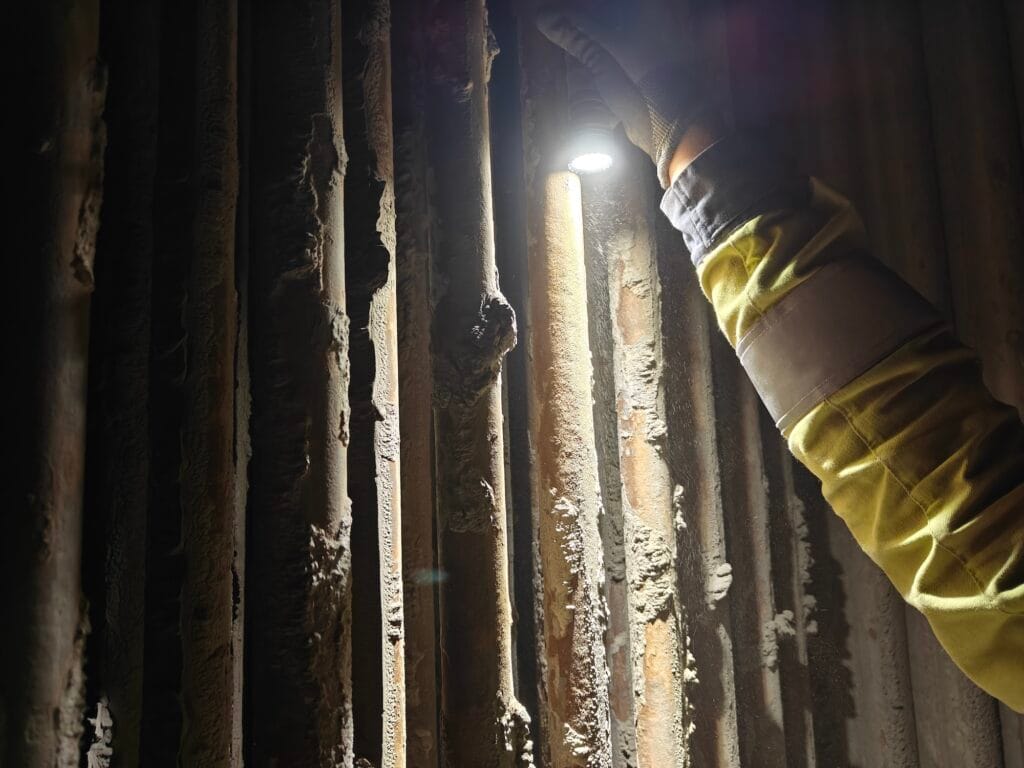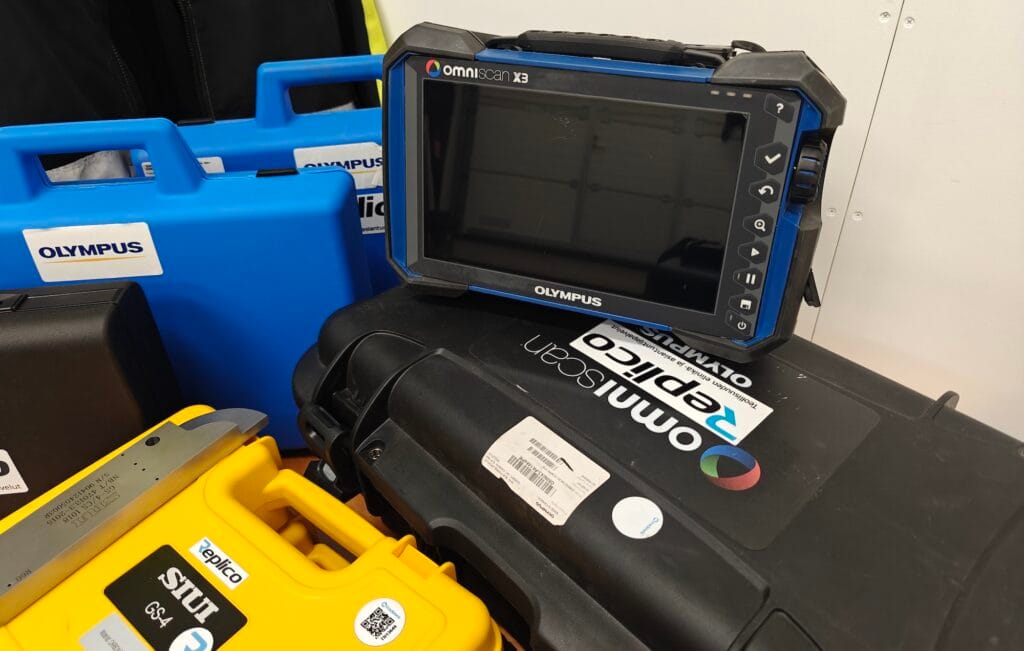Radiographic testing is the latest addition to Replico’s comprehensive range of NDT methods. This non-destructive inspection method provides an accurate assessment of the condition of various materials, pipes, and welds.
Until recently, radiographic inspection was missing from our otherwise comprehensive NDT inspection toolkit. However, in late summer 2025, we finally added this much-needed component: radiographic inspection (RT) is now part of our service offering, enabling us to provide our customers with even more comprehensive inspections as part of our overall service package.
Radiographic testing is an excellent inspection method for various industries, including the chemical and process industries, power plants, and engineering workshops. The method is suitable for, for instance,
- inspecting pipelines and pressure vessels
- detecting internal weld defects
- inspecting finished castings or other metal structures
- monitoring the condition of machinery and equipment
- detecting wear and other damage, such as corrosion.
Standards define the use of radiographic testing, for example, in quality assurance for pipe welding. As one method of lifetime inspection, radiographic testing also has its place in quality assurance in the manufacturing industry, both in machine shops and in the chemical industry.
Radiographic testing offers reliable information without damaging the structure
In radiographic testing, an image of the material being examined is recorded either on film or a digital sensor, showing cracks, pores, and other discontinuities as shadows or areas of different colour. This allows the detection of defects that cannot be seen with surface inspection methods. Radiography can be used when the material has a maximum thickness of 50 mm, which allows for a wide range of applications.
Advantages of radiographic testing:
- Versatile: it is suitable for inspecting a wide range of materials and structures.
- Accurate: radiographic inspection can reveal even small defects that might go unnoticed with other methods.
- Non-destructive: radiography does not damage the object being inspected, so it can be used again and again.
- Documentation: film or digital recordings are stored for later comparison, allowing reliable monitoring of the situation and, for example, checking whether a detected defect has grown or how the piping has worn over the years.
We primarily use digital radiography, which has the added advantage of providing immediate results on-site. Digital technology also allows image editing and, for example, more accurate examination of dimensions. However, the digital panel used in digital imaging requires slightly more space than traditional film, so in some sites, the traditional method is the only option.
Radiographic inspection always requires appropriate protective equipment and consideration of radiation safety. If radiation is a problem at the site, we can use phased array ultrasonic testing (PAUT) as an alternative inspection method. This is also a highly accurate method and can be used to inspect even greater material thicknesses.
High-quality radiographic testing by Replico’s experts
We perform radiographic testing with expertise and according to standards for all types of objects, both as part of NDT testing and as a separate service.
We use high-quality Pexraytech and Teledyne radiographic equipment that utilises the latest technology and enables both digital and traditional radiography. We always select the method that best meets your specific needs, and supplement it with other NDT inspection methods as necessary.
Ask our experts for more information – we can advise you on how to ensure quality and functionality at your site with radiographic testing!




